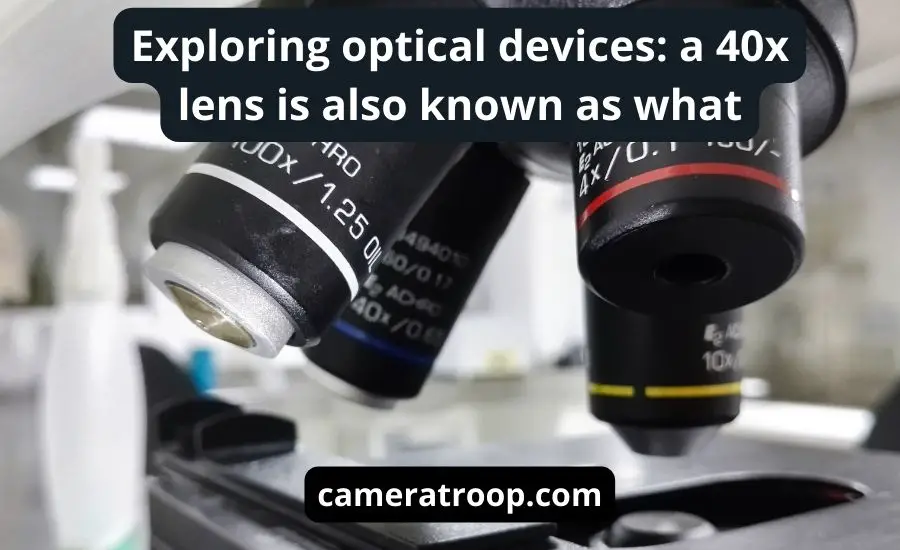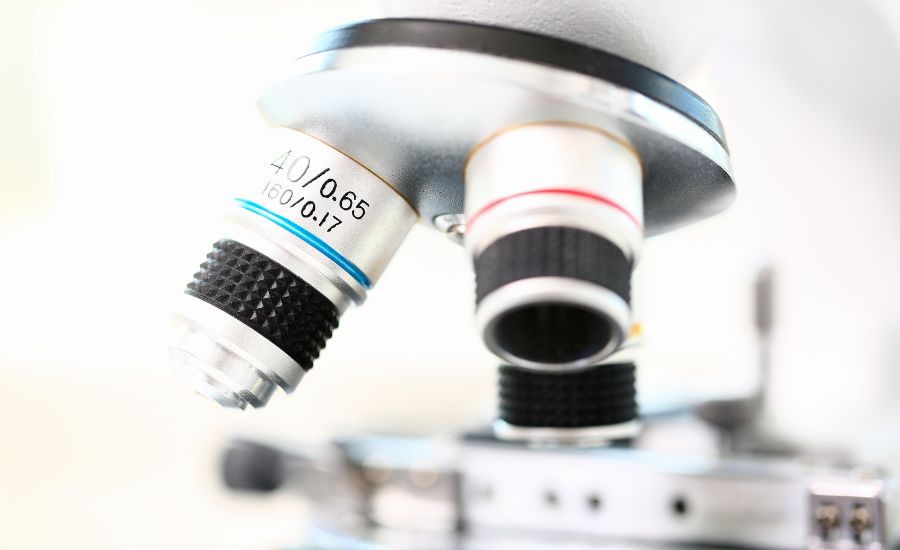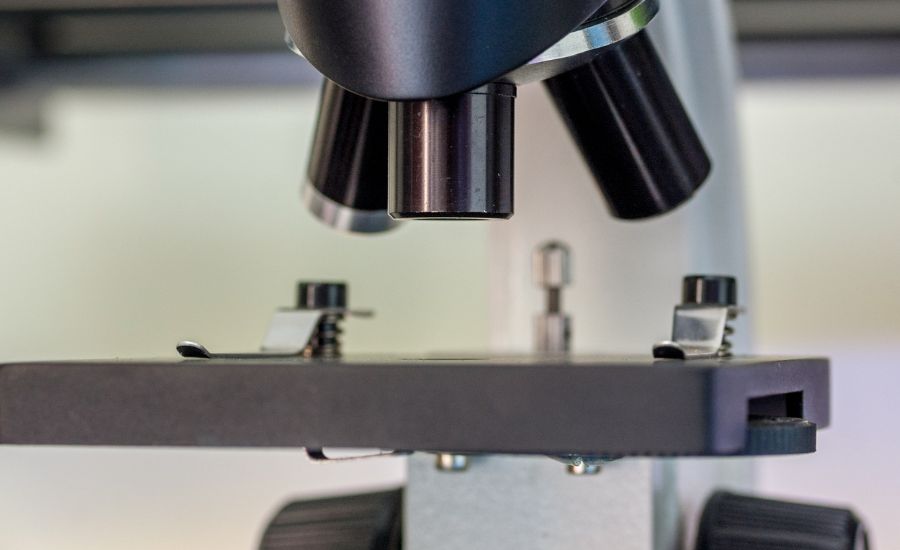
Exploring optical devices: a 40x lens is also known as what
As an Amazon Associate, I earn from qualifying purchases.
Want to know more, about a 40x lens is also known as what? In the ever-evolving realm of optical devices, precision and clarity reign supreme. One component that consistently stands out in the world of microscopy is the 40x lens, often referred to by various monikers.
Within the microscope, the objective lens serves as an indispensable tool, and among its ranks, the 40x, also known as scanning objective lenses, plays a pivotal role.
This lens, equipped for oil immersion, is designed to scrutinize microscopic specimens with remarkable magnification and detail.
For those embarking on a journey into the intricacies of microscopy, understanding the nuances of this lens is a fundamental step.
Not only does it facilitate a higher level of magnification, but it also reveals the hidden intricacies of the microscopic world. But what exactly is a 40x lens also known as, and why does it matter in the grand scheme of microscopy?
In this comprehensive exploration, we will delve into the specifics of the 40x objectives, its role within a microscope, the significance of oil immersion, and the implications for magnification.
With an emphasis on straightforward information and no-frills descriptions, this article aims to provide a clear understanding of this vital optical tool, ensuring you are well-equipped to navigate the world of microscopy with confidence.

What are the types of objective lenses?
Objective lenses are the unsung heroes within the world of microscopy. These essential components of microscopes are responsible for magnifying and capturing intricate details, bringing the microscopic world to life.
But within this pivotal realm of an optical mechanical device for microscopes, there exists a diverse range of objective lenses for microscopes, each tailored to specific functions and magnification levels within microscopes.

Objectives are the heart of any microscope, with the power to transform an ordinary microscope into a precision instrument for scientific research, medical diagnostics, or educational exploration.
One of the most commonly used microscope objective lenses is the 40x objective lens, also referred to as the scanning objective lens.
This specific lens is designed for oil immersion, a technique in which a specialized oil is used to enhance the numerical aperture, allowing for a higher level of magnification.
However, the 40x objectives are just one player in a cast of objective lenses that, when employed effectively, can offer a deeper understanding of the microscopic universe.

These lenses are typically classified based on their magnification power and numerical aperture, factors that influence the amount of detail that can be observed with refractive index.
The objective lenses typically used in compound most microscopes are categorized into a few primary types:
- Low-power objective lens: these lenses, with magnification factors of 4x or 10x, are designed for scanning and initial observation. They provide a wide field of view, allowing you to locate the object of interest quickly.
- High-power objective lens: these lenses, including the 40x lens, offer magnifications of 20x to 100x. They are instrumental in zooming in on finer details and capturing specific features of microscopic specimens. The 40x scanning objective lens, particularly when used with oil immersion, can reveal cellular and subcellular structures with exceptional clarity.
- Oil immersion objective lens: as mentioned earlier, oil immersion objective lenses are designed to be used with a specialized immersion oil placed on the cover slip.The oil immersion objective lens provides the highest level of magnification, often reaching 100x or more. This is particularly useful when examining a specimen that requires the utmost precision, such as in microbiology and histology.
- Plan achromatic and fluorite objective lenses: these objective lenses are engineered to correct chromatic aberrations and deliver superior image quality with two eyepieces. They are commonly used in research-grade microscopes for more demanding applications.
Each type of objective serves a specific purpose in microscopy, and the choice of lens depends on the nature of the sample, the desired level of detail, and the multiple objectives of the investigation.

For instance, a low-power objective lens is suitable for a quick overview, while the special oil immersion objective lens is reserved for in-depth exploration, especially when the highest magnification and image quality are required.
In conclusion, the world of objective lenses in microscopy is diverse, with each lens type having its unique strengths and applications.
By understanding the distinctions and characteristics of these lenses, researchers, scientists, and students can harness the full potential of their compound microscopes and uncover the mysteries of the microscopic world with precision and clarity.

High power objective lens: 40x
The objective lens 40x, an integral part of modern microscopes, is a critical component of optical systems used for magnifying and scrutinizing microscopic specimens.
It plays a pivotal role in unlocking the minute details of the microscopic world.
Serving as one of the objective lenses, the objective lens 40x finds its place within the revolving nosepiece of a microscope.

It is known by several names, including “40x objective lens” and “scanning objective lens.” Each of these names alludes to its primary function: scanning through specimens with a high level of resolving power.
One of the distinctive features of the objective lens 40x is its compatibility with oil immersion. This is a crucial aspect of its design, as it allows for the immersion of the lens in a specialized immersion oil.
This immersion enhances the resolution of the eyepiece lens, resulting in clearer and more detailed observations. The use of oil immersion ensures that the maximum amount of light rays is collected from the specimen, which in turn contributes to higher resolution and improved image quality.
When this objective lens 40x is used in combination with the eyepiece lens, it results in the calculation of the total magnification.
The total magnification of a microscope is determined by multiplying the higher magnification of the objective lens by the magnification of the eyepiece.
This is a straightforward mathematical calculation that helps in understanding the overall level of magnification applied to the specimen.
In practice, when a specimen is observed through a microscope, the objective lens 40x is often used after the initial scanning with a low-power objective lens.
It allows for a detailed examination of the finer structures of the specimen and other light attributes. However, it is important to remember that the objective lens 40x typically requires the use of immersion oil to function effectively.
In the world of microscopy, the importance of understanding the objectives 40x cannot be overstated. It is a key player in the quest for magnification and clarity.

Whether referred to as the “40x objective lens” or the “scanning objective lens,” its role within the microscope is indispensable. When used in conjunction with the eyepiece lens, several times magnification can be achieved, providing scientists and researchers with the ability to explore the intricate fine details of the microcosms with refractive index of light.
In conclusion, the objective lens 40x serves as a vital tool in the world of microscopy, with its unique capability for oil immersion and high magnification. Understanding its role in the total magnification of microscopes is essential for anyone seeking to unlock the secrets hidden within the microscopic world.

Functions of high-power objective lens
The high-power objective lens, often referred to as the scanning objective lens, is a critical component within the microscope, instrumental in unlocking the microscopic world’s hidden details.
Its distinctive function and significance lie in the precise and powerful magnification it provides, thanks in part to its compatibility with oil immersion.
Magnification and resolution: the primary function of the objectives is to deliver significant magnification to low power out.

This attribute is a result of its optical design, which allows for enhanced resolution and detail when examining minute structures under a microscope. It is important to note that magnification alone doesn’t guarantee clarity; the resolution, or the ability to distinguish fine details with refractive index of light, is also a key factor.
The high-power objective lens excels in both aspects, enabling researchers and enthusiasts to explore a microscopic specimen with a higher degree of precision.
Oil immersion enhances clarity: the use of oil immersion with the objectives is a well-established practice in microscopy.
This technique improves image quality by minimizing the refraction of light. By placing a drop of specialized immersion oil between the eyepiece lens and the slide, the microscope is able to capture a light path and reduce distortion of light, resulting in increased clarity with a refractive index of light.
This is particularly beneficial when observing specimens with intricate structures that require high levels of detail. It is an invaluable tool for achieving the total magnification required for in-depth research.
Total magnification computation: to understand the objective lens’s true capabilities, it’s essential to grasp how total magnification is calculated.
In a typical compound microscope, total magnification results from multiplying the magnification of the objective lens by that of the eyepiece several times.
The objective lens, with its enhanced magnification power, contributes significantly to this total. Therefore, its role is pivotal in the combined effect of the microscope’s various lenses, culminating in a comprehensive view of the specimen.
Microscope’s optical hierarchy: the microscope’s functionality operates in a hierarchical manner, with each lens playing a specific role. The objective lens, situated near the specimen, takes over from the low-power objective lenses to bring the specimen into sharper focus and provide higher resolving power. It is this precise step that often reveals intricate cellular and structural details.

FAQ
What is a 40x magnification microscope called?
A microscope with a 40x magnification objective lens is typically referred to as a “40x microscope.” It’s ideal for high-magnification observations of microscopic specimens as it must be built with a refractive index of light.
What does 40x mean on a microscope?
40x on a microscope means that the scanning objective lens in use provides 40 times the magnification of what is visible to the naked eye. It allows for a closer and more detailed examination of a specimen.
Why is 40x called high dry?
The term “high dry” for the 40x objectives signifies that it doesn’t require immersion oil for its operation. This makes it a convenient choice for high-magnification microscopy without the added step of using oil immersion, ideal for routine applications.
Is 40x the high-power lens?
A 40x lens is considered a high-power eyepiece lens, providing significant magnification. However, compound microscopes often have even higher-power lenses, such as 60x or 100x lenses, which are referred to as very high-power lenses. The categorization can vary based on the specific microscope model and manufacturer.
Conclusion
The 40x eyepiece lens, also known as scanning objective lenses in some contexts, plays a vital role in the world of microscopy.
Its primary function is to provide substantial magnification power, aiding researchers and enthusiasts in examining microscopic specimens with precision and clarity.
When coupled with an oil immersion lens, it further enhances the quality of the images, offering a detailed view of intricate structures.
Understanding its significance within the optical hierarchy of a microscope and its contribution to total magnification is essential for those venturing into the realm of microscopy.



